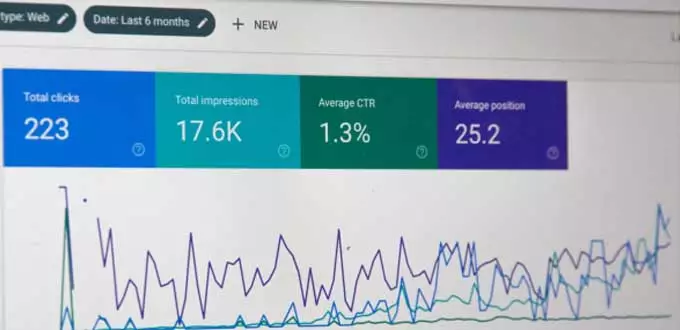
When we start a business, we will encounter numerous unfamiliar terms. Segmentation of the market is one of them. Then what is the meaning, what are the terms, and what are the benefits? Consider the discussion contained within this article.
There are numerous marketing strategies that businesspeople frequently employ. Among the most well-known and perennially popular are STP, or segmentation (mapping), targeting, and positioning. To gain a better understanding of STP’s application, it is necessary to first examine the segmentation material.
Market Segmentation Definition

According to Philip Kotler and Kevin Lane, this action is an attempt to segment the market into distinct segments that can be properly identified.
Apart from Kotler and Kevin, several other experts interpret market segmentation. For instance, Gary Armstrong, an economist, defines segmentation as the process of dividing a market into distinct plots based on their needs and characteristics. The objective is for businesses to develop products that are tailored to their target consumers.
Also read: Definition of An Organization According to Experts
Meanwhile, Pride and Ferrell define market segmentation as a technique for segmenting the market into several potential and targeted customers, particularly those with similar characteristics or needs.
Simply put, market segmentation is the process of categorizing consumers according to their distinct characteristics, needs, and purchasing power.
Typically, businesspeople use this strategy to locate the right customers. The reason for this is that if the results are appropriate, the product or service being sold has a good chance of being successful.
Requirements for Market Segmentation
For this marketing strategy to run and succeed as desired, we cannot do it haphazardly. According to Kotler, several segmentation requirements must be met by entrepreneurs for the results to be effective, including:
1. Measureable
The first requirement implies that the market segment should be capable of assisting the company in quantifying the market’s potential, purchasing power, and resource allocation in quantifiable terms. Without quantifiable mapping, business owners will struggle to market their products.
A small example of a quantifiable requirement is the potential for women’s fashion products. Segmentation can be used to determine the product’s potential success, the purchasing power of the target female consumer, and the amount of resource allocation required to realize the product according to market needs.
Also read: New Product Marketing Strategies
2. Logical and Substantial
Second, segmentation should be logical and profitable. This is a critical step because even if we have pocketed the characteristics and market needs, without a logical and substantial market mapping, it will all be for naught.
The businessman’s objective is not only to ensure that the product is known, but also to be able to serve the target market’s needs and generate profits based on the market mapping strategy implemented.
3. Distinctive
The third criterion is that market segmentation should be easily discernible. This is why, when conducting market mapping, we should select a heterogeneous market with a broad target and a sizable consumer base. Typically, this type of strategy has the potential to generate a sizable profit.
Additionally, distinctions will facilitate the implementation of this strategy. The reason for this is that we know where the target is, how many there are, and how to master it due to the striking difference.
4. Reachable and accessible
When conducting market mapping, identify critical points that will become strategic targets later. To ensure that the results are comparable, ensure that the targets are reasonable and reachable.
Benefits of Market Segmentation

1. Segmentation can increase sales potential
Segmenting the market enables businesses to determine where and to whom to market their products. This is not always possible without market mapping. For instance, we are more likely to get along with someone if we understand their language, as opposed to people whose languages are foreign to us.
This concept enables businesspeople to maintain a firm footing. They are unquestionably one step ahead of competitors who market their products without first determining their target market.
2. A successful marketing strategy
Numerous marketing strategies can be studied in business science. However, not all of them can convincingly demonstrate that the potential market is the ideal target and consumer for marketing the product.
This can only be determined by implementing a segmentation marketing strategy. This is why this strategy is frequently referred to as one of the most effective.
3. Promotion is more manageable
Businesses can more easily create promotions based on their ideal target market and consumers when they use market mapping. This type of promotion is unquestionably effective. As we all know, a well-executed promotional strategy can result in a significant increase in sales.
4. A bond exists between the product and the consumer
Whether we admit it or not, people are more interested in what they are familiar with than in what is unfamiliar. This can be accomplished through market mapping, which enables consumers to be easily attracted to and bound by products that are tailored to the characteristics of the targeted market.
Instant noodles are a simple example. Because instant noodle products are frequently served as a side dish, they are popular with the lower middle class and boarding children. Instant noodles, on the other hand, are unappealing to the upper class, which frequently interacts with foreign and expensive foods such as pasta.
Also read: Examples of Famous Brand Marketing Strategies
5. Business stays on the right track
Finally, market segmentation benefits include the ability to keep product promotion and marketing on track. That is, the likelihood of marketing the product in an unsuitable market is extremely slim; given that the mapping process has indirectly determined the path of product manufacture and promotion in accordance with the characteristics of the targeted market.
Well, that’s a review of the understanding, terms, and benefits of market segmentation. In addition to utilizing segmentation to market products, use the online and offline cashier application iREAP POS to increase sales and facilitate product stock data collection.
It may be useful.



